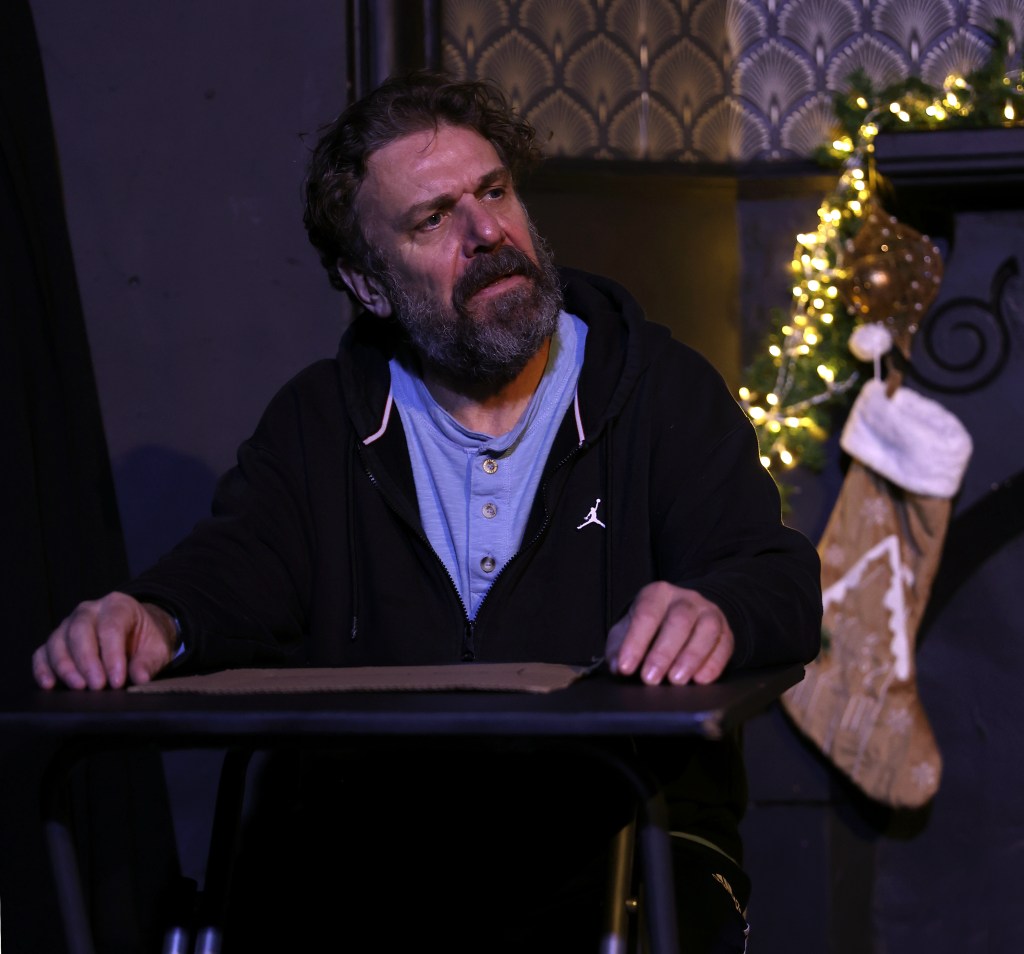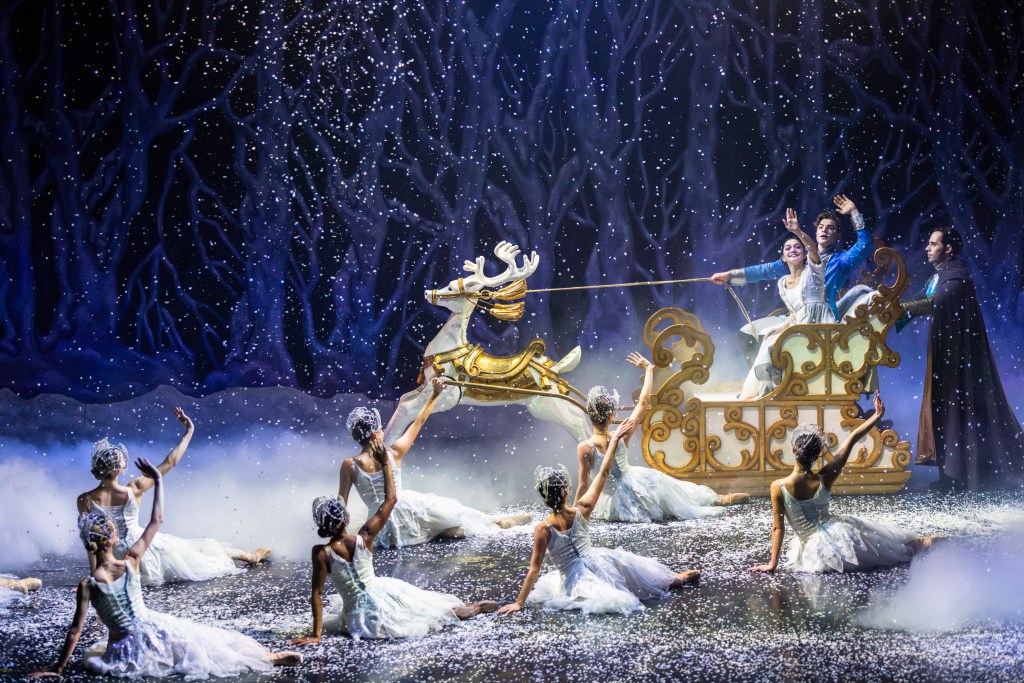★★★☆☆
Opera Della Luna’s production of Sweeney Todd: The Victorian Melodrama is a largely entertaining yet bizarre experience that blends opera, melodrama, tragedy and pantomime in a refreshing but often jarring version of the Sweeney tale. In a cut-throat world of theatre and entertainment, will this production of Sweeney Todd make the cut?
Originating from the ‘String of Pearls’ tale in the serial Penny Dreadful stories, the gruesome tale of Sweeney Todd was quickly adapted into a drama with accompanying music which has been lost to time. Sondheim created the modern musical, but the original playwright George Dibdin Pitt’s script remains largely intact for the more dramatic monologues and speeches of today’s production, adding a sense of authenticity and a rich layer of metaphor to the campy melodrama style.
Other elements were adapted by Jeff Clarke, as well as an orchestral arrangement by James Widden, which includes a variety of period pieces by Michael William Balfe, Julius Benedict, and Henry Bishop, operatic performances and dialogue accompanying music, vastly fuelling the show’s dramatic flair and highlighting its creative use of (and mocking of) Victorian melodrama techniques and exaggeration.
With melodrama comes the crazy ,overdramatized characters. There’s the obviously fiendish Sweeney Todd (Nick Dwyer) as he murders his victims, and thieving the infamous string of pearls, his frankly depressed accessory to murder in Mrs Lovett (Lynsey Docherty), the love-struck Johanna (Madeline Robinson), whose operatic solo was a treasure to the ears, and her barmy parents (Caroline Kennedy & Peter Van Hulle), and the hilariously brave and down-to-earth maid Cecily (Lynsey Docherty).
Reverand Lupin (Paul Featherstone) was one particularly comedic character. while the whole arched-backed Richard III-esque physicality is rather overused in villainous tropes, his greasy hands rubbing connivingly and his creepy facial expressions as he harasses women and runs from the consequences is quite amusing.
Oddly enough, I also loved Ben the Beefeater (Will Kenning) for his jolly demeanour, despite his rather misogynistic treatment of Johanna’s crazed mother in one scene. While I was surprised that there wasn’t loads of singing, what is sung is powerful or alternatively rather hilarious.
As the performance starts, we are quite literally thrown into the deep end after haunting shadows of the cast predict the story before cutting to where the pearls are first seen. One transition later and we’re brought to Sweeney Todd’s Fleet Street barbershop where he reveals his devious tendencies. A ghostly window projected onto the hanging sheets is soon covered in blood-spatters as his victim is stabbed and thrown comedically down the trap-door (with Todd waiting for the sound of his body hitting the bottom becoming an ongoing gag).
The sound-effects were expertly created by an attentive orchestra, whether mimicking creaky doors and boxes or playing the accompanying music, they performed flawlessly and never missed a mark. By the time you hear these odd sound-effects, you begin to realise that this isn’t your typical gritty retelling of Sweeney… No, something is off, whether intentional or not.
It’s not until we first meet Johanna and her father that it becomes clear that this will be a comedy of sorts as her father mocks her melancholic laments over her possibly dead lover, and the Reverand skulks into her life all panto villain-like and tries to wed her, being met with resounding objections. In fact, many elements of the show felt a little too pantomimey in Clarke’s pursuit of that historical Victorian feel.
The encouragement of audience hissing and booing in the second half felt rather jarring, since it had barely been used in the first, and even interrupted some of Todd’s dramatic speeches as hecklers inevitably began calling out (although it was handled well by the Dwyer with his exasperated and frustrated Sweeney Todd act). This, coupled with fourth-wall breaks and comedy segments that strayed a little too far from the plot, made for a rather jarring and odd tone.
One half of me felt that it could have benefitted from going all in on the chaotic nature, the silly meta-references to certain actors playing several parts, and the almost childish tantrums from Todd – maybe like Mischief’s comedy plays, such as The Play Goes Wrong and Peter Pan Goes Wrong – but the other half of me felt that Sweeney Todd himself should have been written as the serious character… the shady Macbeth figure with accompanying Shakespearian comedic counterparts.
While brought to life with a gorgeously gritty accent, elegant Victorian garbs, and particularly devious acting by Dwyer, Todd feels like a character that should remain draped in the shadows of his deeds rather than mocked or made a fool – although I did like the little one-word exclamations like “escaped” and “confusion” for their silly antiquated drama vibes.
Indeed, towards the end of the show, the plot not only slowed down because of added comedy sketches, despite its constant alternation between characters and the inevitable capture of Todd, but it again made Todd into this desperate character, sitting idly in the chair as the rest of the cast gossip about other characters – although I did quite enjoy the character switches and the facial hair malfunction in these moments. Additionally, I was rather contented with the muffin-maker’s (Will Kenning) hilarious solo and many puns about Lovett’s delicious pies, despite all the fingernails and fingers he finds in them.
At times, it felt like the earlier haunting in which a bloodied victim jump-scares the audience as he’s dragged on his chair across the stage towards the petrified Sweeney Todd and his young apprentice, and the final moments where Sweeney is lowered into the hellish red and smoking trapdoor were a part of a different show. They had hints of well-crafted humour in them but were far more dramatic set pieces, which I ultimately craved more of.
Ultimately, I feel like the show struggles with finding that niche area with all the historical tropes and humour, and modern sentiments, drama and expectations. While the cast performed phenomenally, with most switching seamlessly between numerous roles, and while I loved the creative reimagination of the Victorian Melodrama genre, Sweeney Todd ultimately needs a little more time in Mrs Lovett’s oven to maintain a steady-balance between the tense plot and the sometimes jarring comedic escapades.
Sweeney Todd: The Victorian Melodrama has now ended its run at the Lowry (Quays Theatre); it goes on a little break before ending its UK tour at Theatre Royal Bath, where it runs from July 23 to 27.
Photo: Andy Paradise



